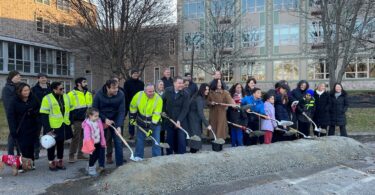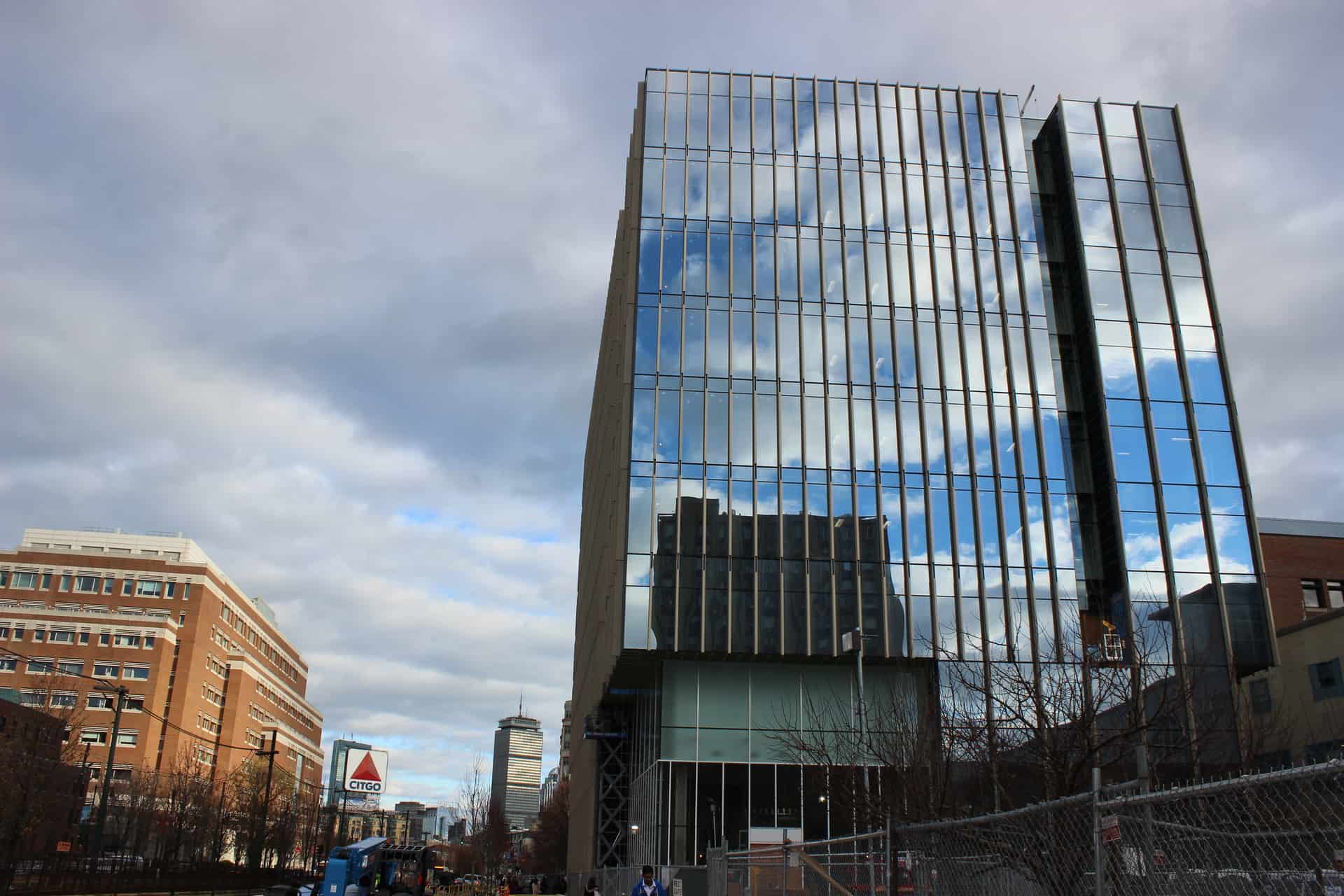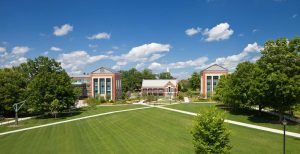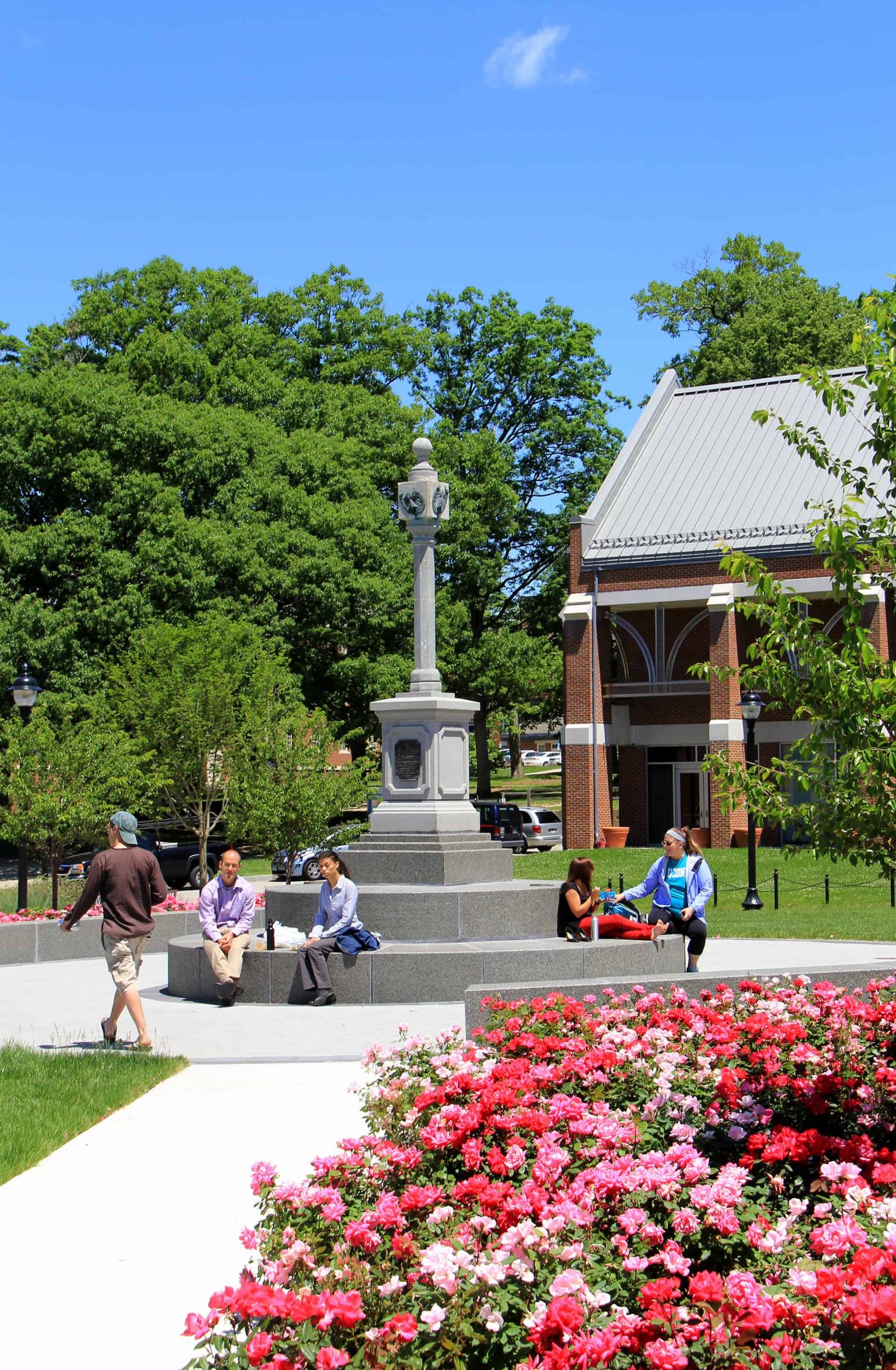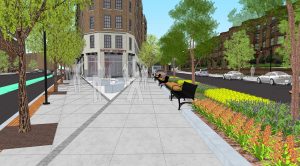Copley Wolff Design Group Provides Insight into the Campus Landscape
by Danna Day
As colleges and universities work with designers to improve their campuses through the construction of new buildings or renovations and expansions to existing facilities, they understand how critical an innovative and practical landscape design is for the student experience. An effective design entices visitors, offers numerous health benefits, provides a sense of community, educates students on the importance of environmental awareness, and creates connections and safe circulation routes. Copley Wolff Design Group has worked on numerous college campuses throughout New England, employing a wide range of designs and approaches such as extensive plantings, improved accessibility routes, green roofs, blending new additions to existing campus aesthetics, and general landscape features such as courtyards, quads, and outdoor classrooms.
It is human nature to put importance on aesthetics, and a beautiful campus has the potential to attract visitors, influence indecisive students searching for the perfect academic fit, and retain students through the duration of their academic career. The landscape design often acts as the institution’s face, defining the campus’ expression and charm while offering visitors pleasant views the moment they step foot on campus. Copley Wolff Design Group recently completed the design for a first year residential quadrangle at Babson College in Wellesley, Mass. Knowing the importance of attracting and retaining students, Copley Wolff’s design offers students a beautiful outdoor amenity that provides flexible open green space, a fire pit, seating areas, plantings, trees, and circulation routes connecting four residential halls.
Many studies have shown that being outside supports our health and wellbeing and the visual and environmental diversity created through the landscape could have positive impacts on the psychological well-being of individuals. Providing outdoor spaces for students can result in improved focus, strengthened immunity, increased concentration skills, and lowered stress levels. Being outside also increases social interaction by offering students a place to relax, take part in events, and participate in recreational activities. Boston University (BU) is currently renovating Myles Standish Hall, the university’s oldest dormitory. Prior to the renovation, students had no outdoor gathering space to speak of. Responding to this challenge, Copley Wolff’s site design incorporates a triangular-shaped park that fits within the confines of the dense urban streetscape. The new park not only provides students with a welcoming outdoor space for interaction, but also a safer passage through the neighborhood.
As college campuses strive towards environmental awareness, creative efforts and methods are incorporated into the design of buildings and the landscape. Landscape design elements include rain gardens, permeable paving, bike lanes, native plant materials, and green roofs. Many campuses use these design elements as tools to educate students on the importance of the natural environment. Copley Wolff is currently working on the site design for a new Recreation Center at the University of Connecticut in Storrs, Conn. In accordance with the university’s desire to be environmentally conscious and to educate its students on the value of sustainable design, the landscape design incorporates bio-swales, permeable paving, native plant materials, bicycle racks, and a designated area for a potential bike-share program.
Vehicle and pedestrian circulation and safety can be clearly defined through landscape design. Ease of movement through campus and traffic calming are achieved by integrating unique paving patterns and textures, raised plant beds, curbing, bollards, and fencing into the landscape. The University of Massachusetts, Dartmouth is expanding the Charlton School of Business by adding a new Learning Pavilion to the already existing structure. Copley Wolff’s site design includes an entry approach to act as a gateway to the interior academic campus and outdoor gathering areas for interactions between faculty and students. Through the use of paving patterns, seat walls, and native plantings, Copley Wolff’s site improvements integrate the building with the site and further integrate the site with the rest of campus.

